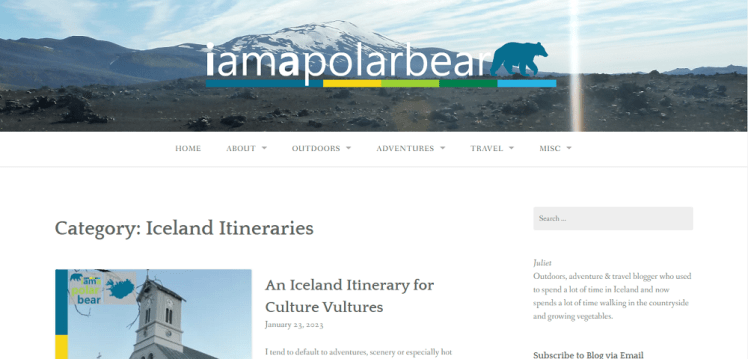A friend got in touch the other day. His brother is going to Iceland and wanted to ask about tours vs doing it himself and it occurred to me that I’ve never actually written a How To Plan A Trip to Iceland post. Well, here we go!
My initial response was to ask about seasons and driving but actually, we start more basic than that. What do you want to do? Once we know that, then we can start asking questions about how to achieve that, like what season are you going? and are you willing or able to drive yourself? If you’re after a city break, there’s really no need to debate car vs tour bus and the difference between seasons is negligible, apart from what clothes you pack. On the other hand, if you’re planning a mountain trek, the season is very relevant and you’re probably going to get about by bus.

What do you want to do?
Are you after a nice city break, where you’ll spend all your time in Reykjavik, enjoying museums, cafes and shopping? Do you want to have action-packed adventures? Lots of hiking? Sightseeing? Once you start investigating trips to Iceland, you’ll see the Blue Lagoon and the Golden Circle pushed right into your face but honestly, there’s more to Iceland than one small city and two tourist trips, there’s bound to be something you’re interested in.

Driving vs buses
If you want to get out of Reykjavik, driving gives you the most freedom. It’s also just plain the best way of getting around.
Long-distance buses used to be quite a good compromise. In 2013, I bought a bus passport and used the network of long-distance buses but very few of those routes still exist now. You’ve got the tourist hiking buses between Reykjavik and either Landmannalaugar, Þórsmörk or Skogar but they only run once, maybe twice a day – they’re meant for drop-offs and pick-ups at each end of the Laugavegur Trail, so they’re not expecting several batches of people wanting their services in the middle of the day.

There are long-distance services on the Strætó city bus system but they seem to be designed to discourage you from using them. They don’t fit together very well – pretty much for any new leg on any new timetable, you’ll have to start a whole new day – and even individual services seem meant to put you off long journeys. For example, you can take route 51 from Reykjavik to Skaftafell but despite only one bus a day arriving in Skaftafell, the timetable has thirteen columns covering nine departures from Reykjavik and to do the whole journey end to end, you have to cross three columns, implying two changes. Despite the three columns, I’m 99.9% sure that will at least all be the same bus and there won’t be any actual physical changes.
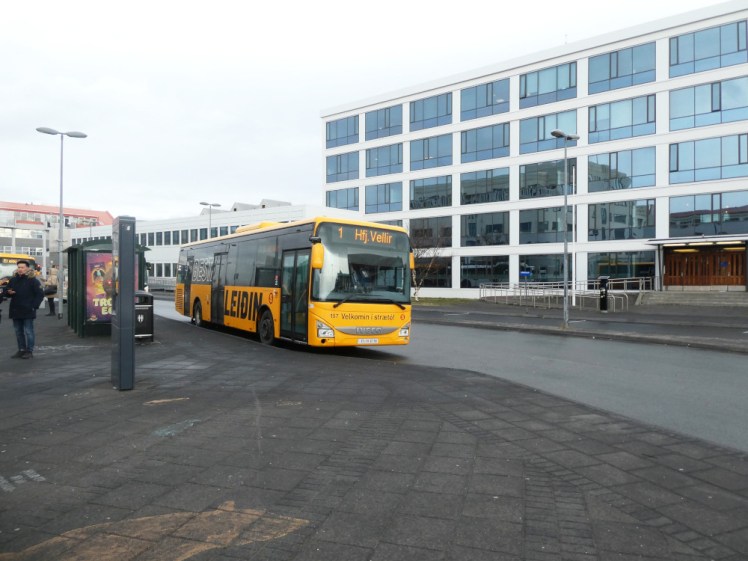
So public transport is basically out. That leaves you a car vs day tours.
Pluses of a car: you set your own itinerary. Go where you want, stay as long as you want. If something catches your eye on the way to your planned attraction, you can stop. If you feel hungry, you can stop and have lunch. Negatives of a car: it’s really expensive, you don’t necessarily know where you want to go or how to get there, you’re not going to learn anything more than what’s in your guidebook, you’ll have to pay for parking at certain places and you can’t go into the Highlands.

It’s illegal to drive rented cars on F-roads, which are the rough roads across the Highlands – that is, it’s mostly illegal because standard insurance doesn’t cover those roads. If you can find a specialised company with expensive insurance, you may be able to do it. I still don’t recommend it. You will find yourself fording a glacial river and that’s a lot harder than you think it is, to say nothing of the difficulty in navigating a region that’s all gravel plains and lava fields, with the roads made of little more than tyre tracks and yellow poles.

Pluses of tour buses: your driver/guide knows exactly where they’re going and exactly how to show you the very best of whatever you’re going to see; you’ll get hours of information chattered at you, you don’t have to navigate or negotiate gravel roads or pay for parking. Negatives: you’ll be at the mercy of the bus’s schedule, which means no time to linger until you’ve had your fill of that waterfall or geyser, no choice of where you’re going to stop for lunch or extra time to explore that interesting hill that might give you a good view of wherever you’re visiting.
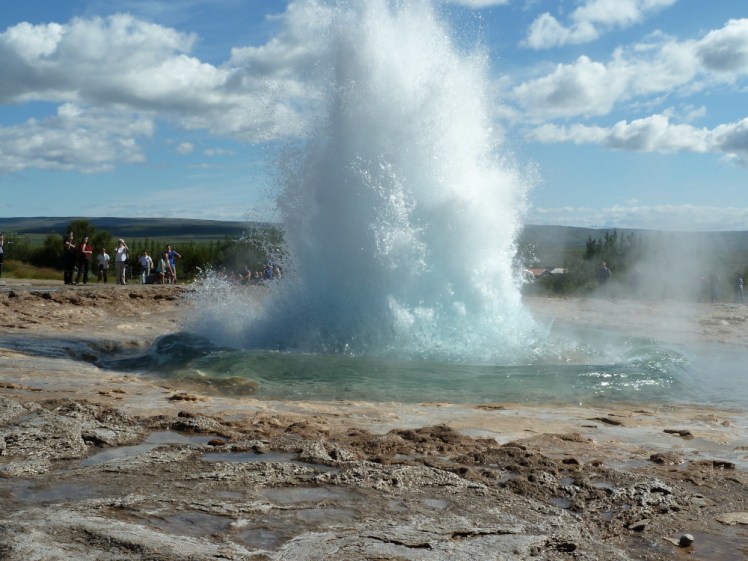
Summer vs winter
If you’re planning to leave Reykjavik, the season is going to make a huge difference to your plans. Within Reykjavik, it’s not really going to matter if it’s sunny or snowy outside when you’re in a cafe or museum, you just have to be able to get from one place to the next – and downtown Reykjavik has geothermal under-pavement heating which keeps the worst of the snow and ice at bay.

Iceland isn’t as icy as its name suggests but it’s going to be dark for up to eighteen hours a day in winter, the Highlands are going to be utterly inaccessible and there’s more likelihood of ferocious storms. I personally wouldn’t drive in Iceland in winter because I’m not used to driving on icy or snowy roads and I wouldn’t trust myself to be certain where the roads are when your only signs are two lines of yellow poles sticking out.

It’s still not exactly going to be tropical in the summer, so you probably shouldn’t take your beach dresses and flip flops but you’ll get pretty much 24 hour light, snow-free roads and a chance of sunshine. Still, even in July, the weather can be bad in the Highlands – Icelandic summer in the mountains doesn’t start until quite late in June and winter is setting in again by the middle of August. In summer, tourism really wakes up so accommodation will be expensive and you’re best making sure you’ve either got it all booked in advance or that you plan to camp – spontaneity, availability and price don’t make a good combo in the height of summer.
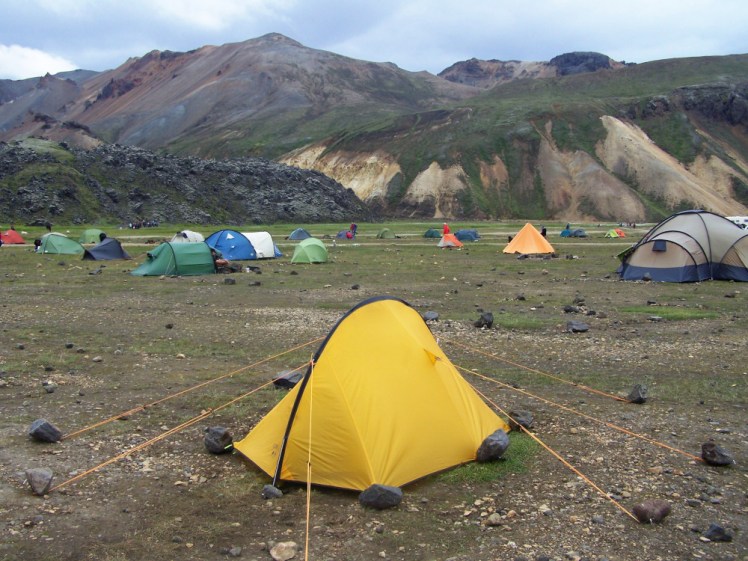
What accommodation do you want?
Again, this is going to depend on various factors. If you’re doing tour buses, you’re going to need to be in Reykjavik because that’s where the buses start their journeys. If you’ve got a car, you can venture out into the countryside.
In Reykjavik, there is a campsite but it’s a good journey out of the city centre. Most people stay in actual buildings with actual roofs. Accommodation in the city is expensive. The fact is, although there’s a new hotel opened about every other week, Iceland just can’t keep up with the tourism demand. Book as far in advance as possible (I should take my own advice here; I booked my February trip here just over four weeks in advance!) and bear in mind prices skyrocket in summer.

But you’ve got a lot of choice. You’ve got the usual hotels, ranging from the glittering to the grotty. There are hostels, ditto. You can rent your own apartment or you can stay in a guesthouse, which is something I’ve seen far more in Reykjavik than anywhere else in Europe. What that generally means is someone has opened their home to tourists. Some are like small cheap hotels, where you pick up a key on arrival and then never see the landlord again because this is a house they own specifically for the purpose of housing tourists, which they don’t live in. On the other hand, like in a chintzy seaside B&B, some landlords are always around – they’ll lay out vast breakfasts in the mornings, press packed lunches and flasks of coffee on you and beg you to remove your snowy boots before you come in. You may prefer one or the other style of landlord but it’s generally a lottery as to which one you’ll get. Guesthouses usually involve shared bathrooms and the occasional communal space, like the living room where you eat that breakfast but it’s not entirely unknown to have an ensuite room in a guesthouse.
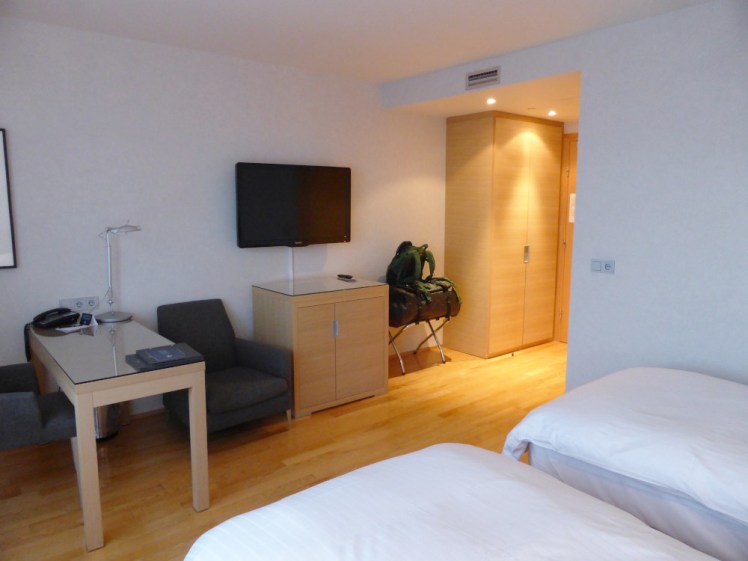
Outside Reykjavik, bear in mind there’s just generally less accommodation. What you’ll hear described as towns and cities are often little more than villages or hamlets and although they’ll have more in the way of hotels than most villages of the equivalent size in the UK, it’s still not a lot compared to the number of tourists passing through. You’ll almost certainly want to think about booking this in advance. That’s why a lot of people who are driving themselves opt for camper vans rather than cars – yes, it’s more expensive but overall you save by being able to turn up a campsite on a whim rather than find a bricks-and-mortar hotel or guesthouse. Iceland campsites are nice, by and large. Some of them have on-site hot tubs and they almost invariably have permanently-hot showers and hot washing-up water because it’s all geothermally heated.

Put together your itinerary
So now you’ve got your outline – that is, you know what you want to do, roughly what medium to use to achieve it and where you’re going to stay. Now you can figure out the details. You can do that from your guidebook or from the websites of the tour companies – even if you’re not using the tour companies, you can still look at where they go for inspiration for your own trips – or you can use my Iceland Itineraries series. At date of publication, I have seven itineraries up but it’s a monthly series this year so it’ll keep expanding. You don’t have to pick one and stick to it – you can mix & match, add pieces and places to your pre-existing plans or keep them in your back pocket for empty days.
The weather may affect your plans, by the way. It’s more likely in winter but storms can ground you all year round or you might decide today is just too wet & windy for that trip you were looking forward to, or it might be too cloudy to see the Northern Lights. Get yourself a vague idea of the things you want to do but be prepared to not do them in the exact order you intended to. Maybe keep an empty day or two for a brand new exciting thing you’ve never heard of before that you suddenly desperately want to do. Brace yourself for wanting to stay in the geothermal spa longer than you expected to. Keep your plans loose and just go with it.
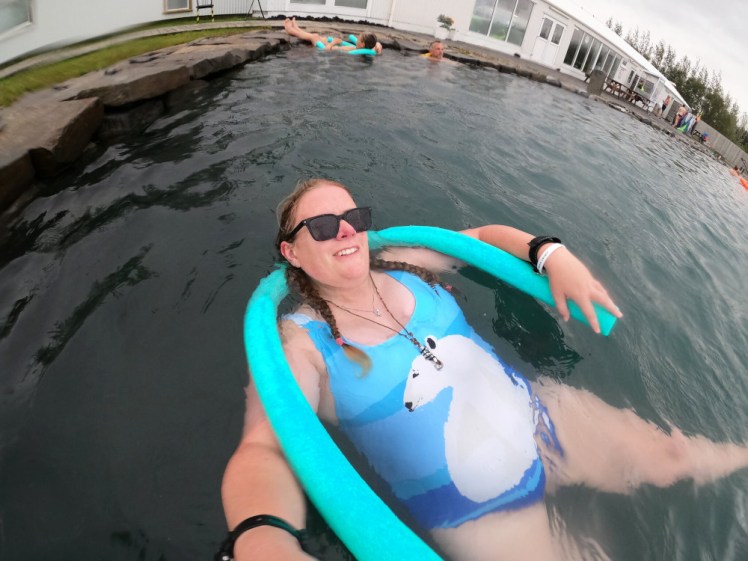
And that’s it!
I can’t be more precise than that – everyone’s trip will be so different that it’s impossible to lay it out step by step. Email me on juliet at iamapolarbear.com if you’d like some more tailored advice and I’ll see if I can help you.
